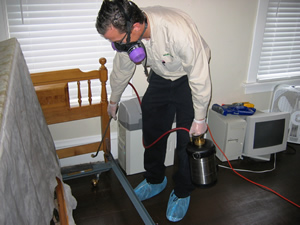Trusted A1 Bed Bug Treatment Houston - Proven Approaches
Trusted A1 Bed Bug Treatment Houston - Proven Approaches
Blog Article
Recognizing the Lifecycle of Bugs for Targeted Control Methods
Recognizing the lifecycle of parasites is a basic element of efficient insect administration techniques. By understanding the numerous stages of growth that pests undertake, a more exact and targeted technique can be adopted to control their populaces. This understanding not only sheds light on the susceptabilities within the bug lifecycle but also leads the way for executing tactical measures that can interrupt their growth and reproduction cycles. Via a much deeper understanding of how parasites progress and flourish, tailored control techniques can be developed to address details points in their lifecycle, eventually resulting in even more successful parasite administration outcomes.
Significance of Recognizing Bug Lifecycle
Understanding the lifecycle of insects is necessary for developing effective and targeted control approaches in parasite monitoring. By understanding the different stages an insect goes through from egg to adult, pest control specialists can identify vulnerable factors in the lifecycle where intervention can be most effective.
In addition, identifying the certain environmental conditions necessary for each phase of the bug's lifecycle can assist decisions on habitat modification or exemption methods to decrease and disrupt the lifecycle parasite populaces. This understanding enables pest monitoring experts to apply proactive steps instead than counting only on reactive therapies, causing more long-lasting and sustainable pest control options. Eventually, a thorough understanding of bug lifecycles empowers parasite control professionals to tailor their strategies successfully, reducing ecological effects and making best use of control outcomes.
Secret Stages in Bug Development
To effectively implement targeted control strategies in pest administration, an essential aspect exists in adequately recognizing and comprehending the crucial stages in pest development. Parasite growth commonly is composed of a number of key stages that are critical for their lifecycle and monitoring.

Susceptabilities in Bug Lifecycle
Throughout the numerous phases of a bug's lifecycle, unique vulnerabilities arise that can be tactically targeted for effective control measures (A1 Bed Bug treatment houston). One vital vulnerability lies in the egg stage, where insects are usually much more at risk to particular pesticides or biological control representatives due to their soft external shell, making them easier targets for treatment. Comprehending these vulnerabilities in the parasite lifecycle is essential for establishing effective and precise control strategies that efficiently handle parasite populations while reducing environmental effect.
Carrying Out Targeted Control Steps

Carrying out targeted control measures commonly includes a multi-faceted strategy. This may consist of habitat alteration to make the atmosphere much less congenial to parasites, such as eliminating standing water for insect control or sealing entrance factors for rodents. In addition, biological control techniques can be made use of, where all-natural predators or microorganisms are presented to keep parasite populations in check.
Integrated Insect Management (IPM) strategies that combine various control measures in a worked with and lasting way are typically the most efficient in achieving long-term parasite monitoring objectives. By carrying out targeted control steps based on an extensive understanding of insect lifecycles, pest populaces can be successfully regulated while decreasing dangers to human health and the setting.
Boosted Insect Management Practices

In addition, the consolidation of organic control agents, such as all-natural killers or microorganisms of parasites, can help in reducing reliance on chemical pesticides and advertise a more balanced ecosystem. Carrying out physical obstacles and traps visit this site can likewise become part of enhanced insect monitoring techniques, offering non-toxic and targeted remedies for pest control. Furthermore, using pheromones and other semiochemicals can interrupt pest breeding patterns and communication, causing lowered pest populations over time.
Final Thought
By recognizing essential phases in parasite advancement and vulnerabilities in their lifecycle, targeted control steps can be executed to reduce bug populaces. Improved pest monitoring techniques can aid minimize the reliance on broad-spectrum pesticides and advertise more environmentally pleasant and lasting insect control methods.
Understanding the lifecycle of parasites is vital for creating efficient and targeted control techniques in parasite monitoring. By comprehending the numerous stages a parasite goes with from egg to adult, bug control experts can identify vulnerable points in the lifecycle where intervention can be most effective. Eventually, a thorough he has a good point understanding of pest lifecycles encourages pest control experts to customize their techniques effectively, lessening environmental influences and maximizing control end results.
By implementing targeted control procedures based on a comprehensive understanding of bug lifecycles, parasite populations can be successfully regulated while minimizing risks to human health and wellness and the atmosphere.
By recognizing key stages in bug growth and vulnerabilities in their lifecycle, targeted control steps can be carried out to decrease pest populations.
Report this page